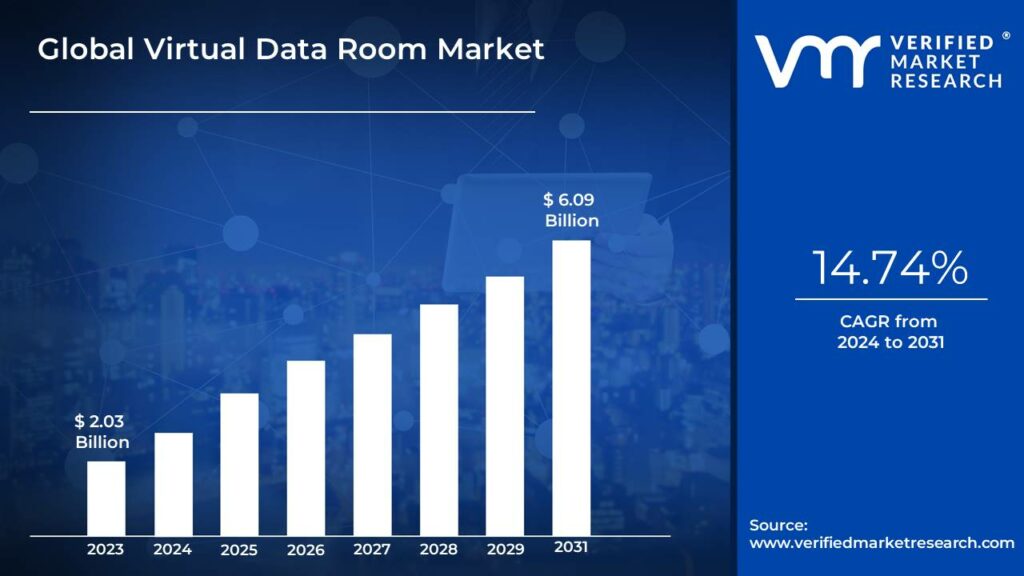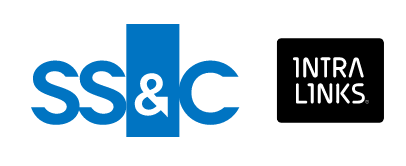As technology advances, our document management methods also evolve since data is the bedrock of every business transaction.
In our post, we explore physical and virtual data rooms and guide you in choosing the best option for your needs! This way, you can make business deals with confidence, whether your main task is to protect data or streamline workflows.

What are physical data rooms?
Physical data rooms are secure, constantly monitored physical spaces where authorized individuals can access and review sensitive business information. Typically, they are used in data-heavy procedures such as mergers and acquisitions, initial public offerings, legal transactions, and financial audits.
The key components and features of a traditional data room are as follows:
- Secure location. It is often located in corporate offices, law firms, or specialized facilities. Access is restricted to authorized personnel only.
- Non-disclosure agreements. Sometimes visitors must sign NDAs before accessing documents to legally commit to keeping the information confidential.
- Access control. Sign-in and sign-out logs track entry and exit. Also, ID checks and security personnel verify identities.
- Non-digital restrictions. Digital devices may not be permitted to prevent unauthorized copying or transmission of information.
- Monitoring. Surveillance cameras and security personnel monitor activities within the room.
- Document management. Visitors can use organized storage and cataloged documents for easy retrieval.
Although physical data rooms were once the go-to for managing business documents, the global shift to digital formats has revolutionized them, too. So, let’s explore how this transformation made document review possible right on your phone!
The evolution of data rooms from vaults to virtual
Here is how the transformation from physical storage to cloud solutions unfolded:
1. Traditional physical data rooms
The early data rooms were physical rooms within companies where important paperwork was stored. A logbook was used to record everyone who entered the data room due to the sensitive nature of the information.
2. Increasing complexity and cost
As transactions grew in complexity, so did the demands on a physical room. More confidential documents needed to be stored, and the number of people requiring access increased.
3. Digital integration and increasing pressure for efficiency
As businesses began to adopt digital tools for communication and data analysis, the inefficiencies of physical data rooms became more apparent. The need to discuss data via emails and process it using spreadsheets highlighted the limitations of maintaining physical records.
4. Transition to Internet-based solutions
Recognizing the need for a more effective solution, businesses began transitioning to internet-based data rooms. These early virtual data rooms provided a digital platform for data storage and secure file sharing, offering a glimpse into the future of secure data management.
| 👁️🗨️ Learn more about other online solutions companies use in 2024! Dropbox vs Box |
5. The emergence of virtual data rooms
Today, online data rooms represent the pinnacle of this evolution, offering unparalleled security, efficiency, and accessibility. They have advanced features such as real-time collaboration tools, audit trails, and automated indexing, making the document review process streamlined and secure.
👁️🗨️ Statistics! According to Verified Market Research, the surge in mergers and acquisitions, the due diligence process, and global expansion drives the need for secure document sharing, increasing demand for virtual data rooms. This is expected to fuel a 14.74% CAGR growth in the market from 2024 to 2031.

Despite the availability of online platforms, some businesses still rely on physical data rooms. Before deciding whether to store your highly confidential documents online or in a physical space, explore the advantages and disadvantages of traditional data rooms and learn the differences between physical data rooms and virtual data rooms.
Benefits of physical data rooms
A physical room offers various benefits, particularly in contexts where security, controlled access, and hands-on document management are critical.
- Security
Physical data rooms provide a safe environment for storing sensitive documents with security measures such as locked doors, surveillance cameras, and security personnel.
- Controlled access
Physical data rooms allow for precise control over who can access the documents. Only authorized individuals can enter the room, ensuring that sensitive information is protected from unauthorized viewing or tampering.
- Legal compliance
In some industries, regulatory requirements may mandate using a traditional data room to store privileged data.
- Data integrity
Physical documents in a secure room are immune to digital threats like hacking, data breaches, and cyber-attacks.
- Focus and concentration
Reviewing documents in a physical room can reduce distractions and enhance focus, as individuals are in a dedicated space for the task, away from the interruptions of a typical office environment.
Drawbacks of physical data rooms
While traditional storage solutions come with advantages, they also have limitations and challenges that can significantly impact financial transactions and workflows.
- Limited accessibility
Traditional rooms require individuals to be physically present to access documents, which can be inconvenient and time-consuming, especially for parties in different geographical regions.
- High operational costs
Maintaining a physical data room involves significant costs related to security personnel, space rental, utilities, and physical storage solutions.
- Restricted collaboration
Traditional data rooms hinder collaboration as only a limited number of people can access the room at any given time. This can slow down processes like due diligence and M&A, where multiple parties need to review documents simultaneously.
- Time inefficiency
The need for physical presence can slow down the process of arranging visits, coordinating schedules, and accessing documents. All this can delay critical business transactions and decision-making.
- Risk of physical damage
A traditional data room is vulnerable to fire, flooding, or other natural disasters that can result in the loss of confidential documents.
So, why do some companies still choose traditional data rooms with all their disadvantages over more reliable digital alternatives?
Many companies have long-standing procedures and protocols centered around traditional data rooms, prioritizing physical documentation and face-to-face interactions. Also, despite the risks associated with physical rooms, some stakeholders perceive them as inherently more secure than digital alternatives. This perception often relies on tangible controls, such as physical barriers and monitored access, that instill confidence in document protection.
Nevertheless, virtual data rooms have emerged as a compelling alternative in the era when technology evolves and security standards advance. So, we will now explore this online way of storing data further and compare it with traditional data rooms.
What is a virtual data room?
A virtual data room is a secure online environment for storing and sharing sensitive business information. The software also provides a feature-rich space for collaboration and communication, which makes it a full-fledged platform for dealmaking.
Businesses employ virtual data rooms for the due diligence process, mergers and acquisitions, initial public offerings, fundraising, legal proceedings, real estate transactions, and many other data-heavy deals with multiple parties.
| 👁️🗨️ Learn more: A data room in M&A as an effective way to speed up and optimize workflows |
What are data room features?
Here is a brief overview of the data room’s main functionalities to help you better understand what this solution offers.
- Secure document storage. Users can store confidential information in a highly protected online environment featuring multiple data protection mechanisms, including multi-layered data encryption, two-factor authentication, document permissions, and dynamic watermarking.
- Document sharing. A data room enables users to securely share confidential documents with authorized parties online, facilitating collaboration on projects and transaction management.
- Granular access control. Virtual data room administrators can set precise permissions and restricted access levels for each user or group, controlling who can view, edit, download, or print specific documents.
- Activity tracking. The platform maintains detailed audit trails of user activities, documenting who accessed which documents and when.
- Collaboration tools. All transaction participants can engage in secure discussions, ask questions, and provide answers directly within the platform across devices.
Ideals

- Access controls
- Built-in viewer
- Full-text search
- Auto-indexing
- Customizable branding
- Advanced Q&A
- In-app live chat support 24/7
- 30-second chat response time
Dealroom

- Access controls
- Built-in viewer
- Full-text search
- Auto-indexing
- Customizable branding
- Advanced Q&A
- In-app live chat support 24/7
- 30-second chat response time
Citrix

- Access controls
- Built-in viewer
- Full-text search
- Auto-indexing
- Customizable branding
- Advanced Q&A
- In-app live chat support 24/7
- 30-second chat response time
Box

- Access controls
- Built-in viewer
- Full-text search
- Auto-indexing
- Customizable branding
- Advanced Q&A
- In-app live chat support 24/7
- 30-second chat response time
Intralinks

- Access controls
- Built-in viewer
- Full-text search
- Auto-indexing
- Customizable branding
- Advanced Q&A
- In-app live chat support 24/7
- 30-second chat response time
We recommend exploring the full list of top data room companies to learn more about their services and functionalities.
Physical data room vs. virtual data room
Now that we have checked the physical data room meaning, its pros and cons, and explored virtual data rooms as an alternative, let’s compare these solutions to help you choose the best option for your needs.
| Criteria | Physical data room | Virtual data room |
| Security | 🔸 Relies on physical controls 🔸 Vulnerable to physical breaches and theft | 🔸 Uses advanced data room encryption and access controls 🔸 Mitigates cyber threats like hacking and data breaches |
| Efficiency | 🔸 Requires physical presence for document access 🔸 Time-consuming for document management | 🔸 Enables remote access and collaboration regardless of user location 🔸 Streamlines document workflows and reviews with multiple dedicated tools |
| Cost | 🔸 Expenses for data room storage, maintenance, and utilities | 🔸 Lower infrastructure costs; no physical space needed |
| Accessibility | 🔸 Restricted to physical location | 🔸 Accessible globally via secure internet connection |
| Scalability | 🔸 Limited scalability for expanding needs 🔸 Expansion requires additional data room space | 🔸 Easily scales to accommodate growing data and users 🔸 Offers flexible data room storage and user management |
| Technical support | 🔸 Often limited to business hours and location | 🔸 Typically 24/7 support globally |
While a virtual data room ensures numerous advantages for sensitive business transactions, traditional data rooms remain a viable option. To help you decide which option best suits your needs, we share a few quick tips below:
- Consider security. Assess your security requirements—physical controls or digital measures—and choose the data room that best protects sensitive data and meets regulatory standards.
- Evaluate efficiency. Compare the time and resources needed for document management, access, and collaboration to determine which option boosts operational efficiency.
- Cost comparison. Consider upfront costs, ongoing maintenance, and potential savings in space and utilities to find the most cost-effective solution for your budget.
- Assess accessibility. Evaluate how easily stakeholders can access and collaborate on documents, especially across locations.
- Plan for scalability. Choose a solution that can grow with your needs in data volume, user access, and operational demands without compromising efficiency or sensitive information security.
- Check compliance. Ensure your physical or virtual data room meets industry regulations, legal requirements, and data protection standards relevant to your business.
| 👁️🗨️ More insights for investors unlocking opportunities in 2024! Check data room best practices and tips related to a data room for investors! |
Conclusions
- Businesses still rely on physical rooms despite drawbacks, such as limited accessibility, high operational costs, and restricted collaboration.
- A virtual data room is an online space for secure data management and collaboration. It surpasses traditional data rooms in data security, efficiency, and cost.
- When choosing between a physical data room and virtual data room providers, remember that your choice can significantly impact the deal flow, including its security, speed, and party engagement. So choose wisely!

